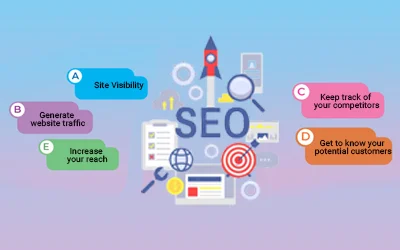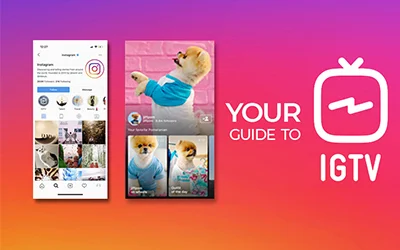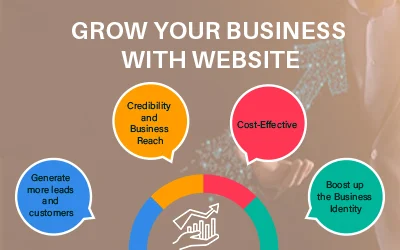Pay-Per-Click is one of the crucial digital marketing strategies for businesses to get visitor to their websites, build brand awareness, and increase sales.
As users' interest and behavior change and AI-powered searches become more common, businesses need to update their PPC strategies to understand their audience better.
In this blog, we have mentioned the 10 easy and effective PPC strategies that will not just help you achieve your desired results but also remain competitive in the market.
Simple and Effective PPC Strategy
PPC strategy is one of the core elements of SEO which helps businesses drive traffic and conversion. Here, we have given some top and effective PPC methods that help you meet your distinct needs.
1. Utilize YouTube Ads
When planning your PPC campaign, consider using other channels like video and display to reach customers across the Google ecosystem, including GDN and YouTube. This can help you target a broader audience beyond search, especially on YouTube, where many brands aren’t active yet.
YouTube offers a cost-effective way to reach users, with 8.6% of people watching content on TV in their living room in the US. Although costs may increase as more brands recognize its potential, it currently offers smaller brands a unique opportunity to reach audiences during prime time.
2. Discover Demand Gen Campaigns
Google Ads is an advertising platform offering various campaign types, like search, video, and Demand Gen. A Demand Gen campaign uses native ads to create awareness and demand at the top of the marketing funnel, targeting users even before they search for solutions.
This is Google's way of leveraging social media advertising, with YouTube being a key platform. When your search campaign reaches its limits, a Demand Gen campaign can help generate more demand and drive additional searches.
3. Landing-Page Optimization
When creating a PPC campaign, don’t forget about the landing page users see after clicking your ad. Google evaluates landing pages to determine ad quality, so it’s crucial to match them to user intent.
Consider the user’s search keywords, your ad's response, and where you direct them. Create a custom landing page that guides users to take the desired action. Always lead them directly to relevant content, like a product page, rather than a generic homepage.
4. Check Campaign Effectiveness
Search might not always be the best channel for your product, especially in a niche market with low search volume. Instead of relying on search traffic, consider focusing on content marketing or building demand for your brand.
Create awareness through digital platforms like YouTube ads so that when people are ready to buy, they remember your brand and search for it directly.
5. Measurement & Reporting
Measurement is a big challenge for marketers, especially with the limitations of Google Analytics 4 (GA4). You may need to use other data sources, such as backend views from Shopify, to better understand what drives conversions.
Look beyond monthly reports and evaluate campaign performance over six months or a year. Focus on key metrics such as new customer growth, brand search, and share of search to know your business growth.
6. Explore GA4
The GA4 interface is complex and constantly evolving, with AI features and recommendations to navigate carefully. While GA4 uses AI to automate many decisions and suggests best practices, it’s important to assess whether these choices are right for your needs before applying them.
7. Change Bidding Strategy
To maximize your PPC campaigns, choose the right bidding strategy based on your goals. For more clicks, use "Maximize Clicks"; for higher conversions, try "Target CPA" or "Target ROAS." "Manual CPC" offers control over bids, while "Enhanced CPC" uses smart bidding for better results. Regularly review your strategy and ensure accurate conversion tracking to make data-driven decisions and achieve the best outcomes.
8. Alter Targeted Location
In Google Ads, the default location targeting is set to people in your physical area, but this may not always be what you want. For example, if you're targeting the UK, you might reach people in the UK, those interested in the UK, or users on the UK version of Google. The most important setting is to focus on people who are regularly in your target location.
9. Implement Negative Keywords
To avoid attracting users looking for free versions of your product, add the negative keyword "free" to your campaign. Since Google matches searches in different languages, if you're targeting Europe, include the Spanish word for "free" as well.
Use ChatGPT to get a list of "free" terms in all your target languages and add them as negative keywords to ensure your campaign excludes free-related searches in any language.
10. Track Conversions
A common mistake in digital marketing is an improper setup of conversion tracking, which can disrupt everything. Ensure you set up conversion tracking correctly, validate it, and track the right conversions without duplication. Accurate tracking is crucial since many campaign decisions depend on it. Incorrect tracking can lead to poor decisions based on faulty data.
The Takeaway!
With technology development and the changing demands and interests of users, businesses also need to update their marketing strategies. This blog highlights 10 effective and easy ways to maximize your PPC strategies, which will increase sales and boost business growth.
However, many businesses struggle to implement or use these strategies and look for agencies for assistance. If you are one of them and looking for a reputed digital marketing company in Delhi, Invoidea is an excellent solution for your specific needs.
We are a recognized PPC company in Delhi that offers customized & budget-friendly solutions. Our experts consult with you to understand your business requirements and create a personalized strategy that helps your business grow effectively and efficiently. And we ensure you remain competitive in the market.










